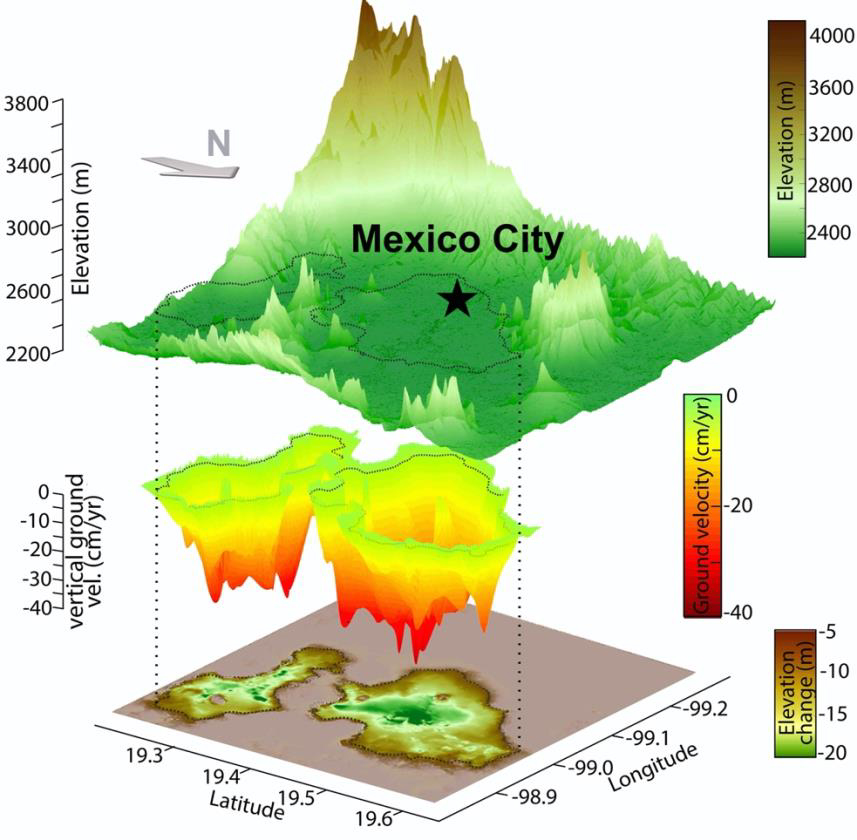IGPP is pleased to invite you to join its Fall 2020 Virtual Seminar Series presentation featuring Estelle Chaussard, Assistant Professor at the University of Oregon. Dr. Chaussard's talk, "Over a Century of Sinking in Mexico City: No Hope for Elevation, Water Levels, and Water Quality Recovery" will be available via Zoom on October 13, 2020, starting at 12:00pm. The seminar will be hosted on Zoom link here (password = mexico). Meeting ID: 994 1181 6421

Date: Tuesday, October 13, 2020
Time: 12:00 pm, Pacific Time
Note: This meeting will be recorded. Please make sure that you are comfortable with this before registering.
Abstract: Many areas worldwide are known to experience land subsidence due to groundwater extraction. It is traditionally assumed that subsidence extent and rates are controlled by groundwater extraction locations and volumes. We reevaluate this assumption by combining over a century of data in Mexico City crossing the fields of stratigraphy, hydrology, and geodesy. Integration of 115 years of leveling with 24 years of InSAR and 14 years of GPS data reveals that subsidence rates have been constant in Mexico City since at least 1950 and reach 50 cm/yr with no elastic deformation. In addition, no relationships exist between water level changes and subsidence rates or between pumping rates and subsidence rates. In contrast, a strong positive correlation is isolated between subsidence rates and the thickness of the upper aquitard. Through integration of these long-term datasets, we forecast that it will take ~240 years to reach total compaction of the upper aquitard, which may lead to total subsidence to 60-100 m. With the potentiometric surface now deeper than the aquitard, aquitard porewater rich in salts, chemical constituents, and pollutants is now flowing downward into the aquifer, hence decreasing water quality. Finally, our work shows that low- and very-low-income inhabitants of Mexico City are disproportionally affected by the consequences of land subsidence in the form of greater exposure to high deformation gradients and their associated shallow surface fractures, as well as decreased access to drinking water.
